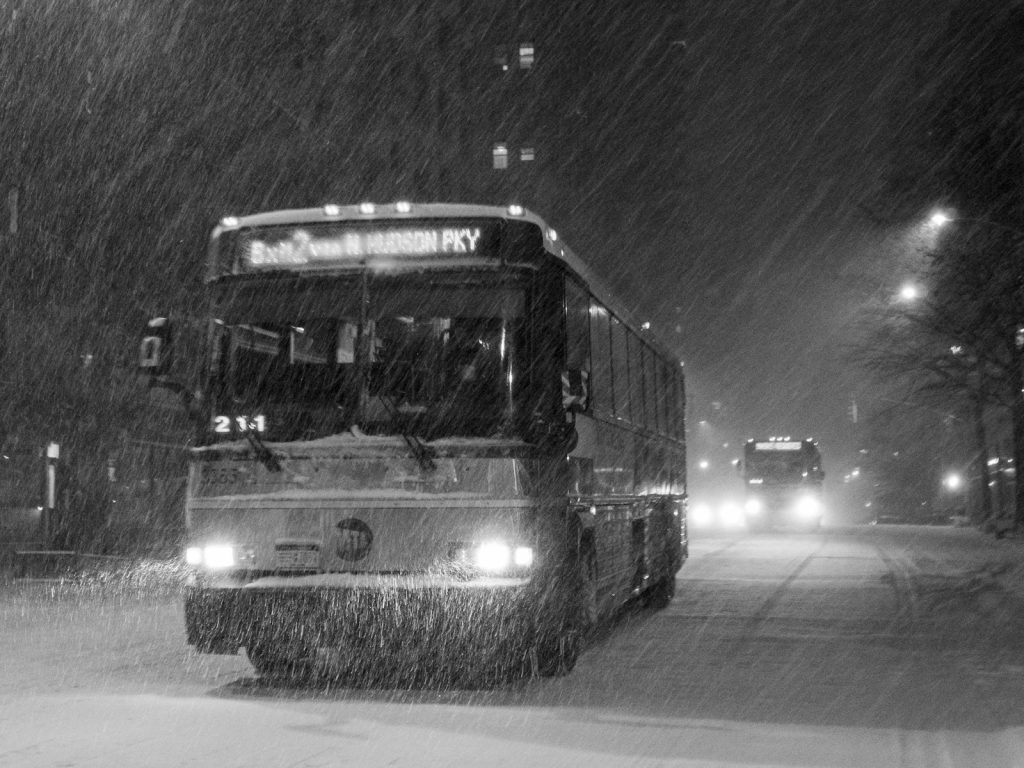Every day, millions of commuters ride buses across New York and New Jersey. When a bus accident happens, the results can be severe — and understanding who pays your medical bills and how to recover compensation can be confusing. This column explains how no-fault insurance works if you own an auto policy (or not), how pain-and-suffering damages are paid, and what special rules apply when a public-transit agency like MTA or NJ Transit is involved.
How your medical bills are covered
After a bus crash, your Personal Injury Protection (PIP) or no-fault coverage determines who pays medical expenses and part of lost wages.
If you own auto insurance, your policy is the first payer — even if you were a passenger on a bus.
- New York: Under Regulation 68, written proof of claim must be filed with your insurer within 30 days of the accident. Late filings are excused only with a reasonable justification (11 NYCRR § 65-3.8). If you live with a family member who has auto insurance, their policy may cover you as well.
- New Jersey: Your own auto policy is also primary for medical benefits, because N.J.S.A. 39:6A-4 requires every standard policy to pay PIP benefits “without regard to fault.” Coordination rules prevent stacking across multiple policies.
If you do not own a car or auto policy, coverage depends on the type of bus:
- New York: You may claim under the bus company’s self-insured no-fault program. State rules specify that if no household auto insurer exists, the passenger may file directly with the bus’s insurer.
- New Jersey: Coverage may come from the bus company’s policy if it includes medical-payment protection; otherwise, health insurance becomes the fallback payer.
Prompt medical attention and timely filing are crucial. New York’s 30-day deadline for proof of claim is strictly enforced, and most New Jersey policies require notice “as soon as practicable.”
How you recover for pain and suffering
PIP covers medical bills and part of lost income — not pain, suffering, or long-term impairment. To recover those damages, you must bring a liability claim against whoever caused the accident.
In New York, you can sue for non-economic damages only if your injuries meet the “serious injury” threshold under Insurance Law § 5102(d). Qualifying injuries include a fracture, significant disfigurement, permanent loss or limitation of use of a body part, or a medically determined injury keeping you from normal activities for at least 90 of 180 days. Once this threshold is met, you may pursue claims against the negligent driver, bus company, or another at-fault motorist.
In New Jersey, the right to pain-and-suffering compensation depends on your own policy and the defendant’s status. If your policy carries the “limitation on lawsuit” (verbal threshold), you must prove a permanent or significant injury. If you chose the unlimited right to sue, you can pursue damages for any proven injury. When the bus is operated by NJ Transit or another public entity, the Tort Claims Act adds another restriction: non-economic damages are allowed only for permanent injuries that meet N.J.S.A. 59:9-2(d).
In both states, pain-and-suffering compensation is paid by the at-fault party’s liability insurer — typically the bus company’s policy, another driver’s auto insurer, or a public-transit self-insurance fund.
Public-bus accidents and 90-day notice rules
Special notice deadlines apply when the bus is government-operated.
In New York, you must serve a Notice of Claim within 90 days of the accident under General Municipal Law § 50-e. NYC claims go to the Comptroller; missing this deadline can bar your lawsuit entirely.
In New Jersey, the Tort Claims Act likewise requires a written notice to the public entity within 90 days of the accident (N.J.S.A. 59:8-8). You then must wait six months before filing suit.
These notice deadlines run separately from the normal statute of limitations (three years in NY for private parties, two years in NJ), so act quickly to protect your rights.
Why early legal help matters
Bus-accident claims can involve several insurers — PIP, liability, and public-entity coverage — each with different limits and rules. A knowledgeable auto-accident attorney ensures that your no-fault claim is filed correctly, identifies every possible insurance source, secures video and maintenance records before they disappear, and meets the 90-day notice requirement for public entities. Early legal action also helps you document “serious injury” or “permanent injury” thresholds, which are key to recovering full compensation for pain and suffering.
Injured in an auto accident?
Whether your crash involved a bus, car, truck, or other vehicle, timely legal advice can make all the difference. Contact Song Law Firm at 201-461-0031 or pi@songlawfirm.com for a free consultation. Our attorneys handle auto-accident and public-transit injury cases throughout New York and New Jersey and will work to secure the full compensation you deserve.
Disclaimer: This column provides general information and does not constitute legal advice. Deadlines and coverage vary by policy and by entity. Consult an attorney promptly about your specific circumstances.
